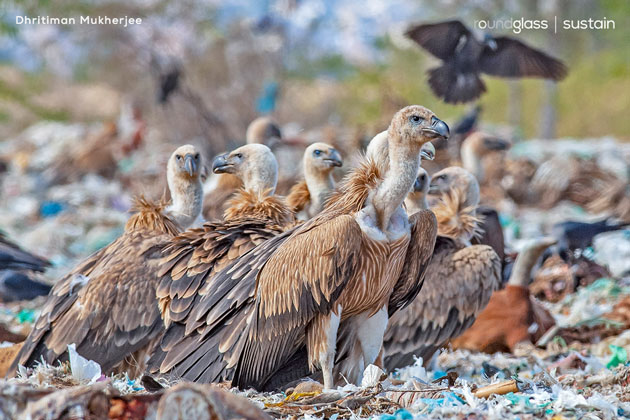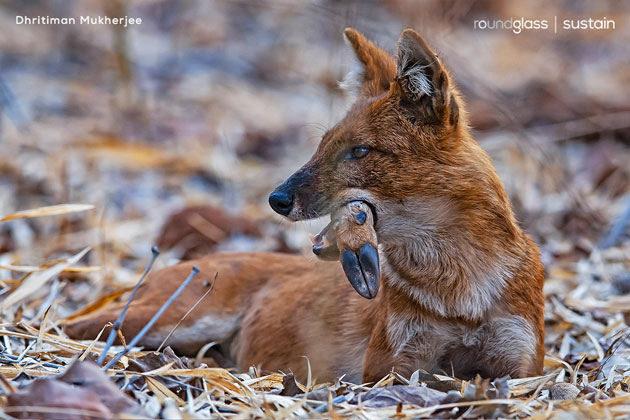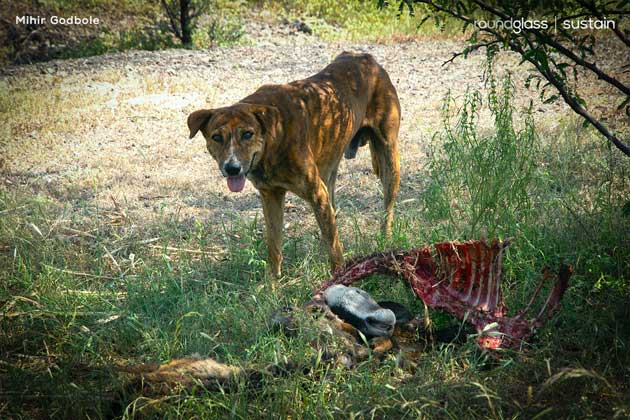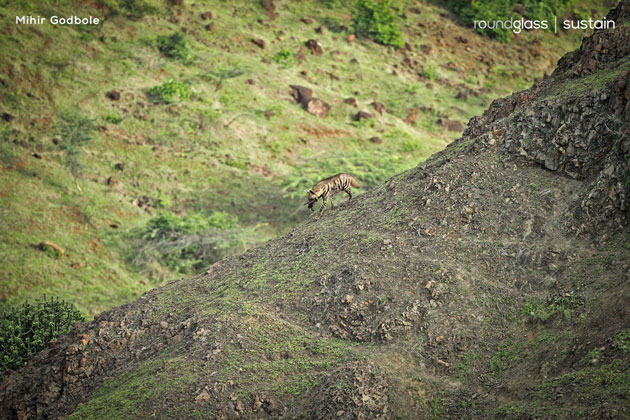The Good Death Eaters: How Scavengers Keep the Ecosystem Clean
- Vultures and other scavengers not only clear decaying animal corpses, protecting us from disease, but their absence could also destabilise entire ecosystems

Writer and photographer for Roundglass Sustain.
I have been asked several times why I chose to study scavengers for my Master’s dissertation. By now I have a rote answer ready: the role played by scavengers in our ecosystem is severely underappreciated, and affects us a lot more than we realise. Animal life is all around us, and consequently, so is death. Have you ever wondered where do all dead and decaying rodents and ants and birds go?
The answer, of course, is that they’re eaten by scavengers — nature’s garbage disposal system. It’s an ancient, traditional, sustainable, eco-friendly system, and while it may get a little smelly it’s (mostly) free of harmful chemicals.
Normally portrayed as nasty, dirty, even treacherous, scavengers play an incredibly important role in the ecosystem, from keeping it clean and free of rotting meat, to helping in the recycling of nutrients, to even affecting the population growth of other species.

Vultures and hyenas are the most iconic scavengers, but they also often find themselves on the receiving end of a bad reputation. What most people don’t realise is that scavenging is a survival strategy in most vertebrate carnivores, from jackals and wild dogs, civets and mongoose, even leopards and tigers. Scavenging as a process was barely studied until quite recently, but as more research goes into how scavengers interact and coexist, a marvellous picture emerges, one of competition and coexistence alike, which only deepens one’s appreciation for the intricate web of nature.
Take vultures — they are the only obligate vertebrate scavengers. Obligate scavengers are animals that rely entirely on carrion (the scientific term for dead animals) as a food resource. The vulture’s ability to fly allows them to cover vast areas in search of food, hundreds of kilometres in a single day. This is a feat no terrestrial animal can accomplish, giving vultures a monopoly over several areas. They have highly acidic stomachs that can kill most microbes in the meat they feed on, and featherless necks help keep them clean over the course of their gory meals.
Vultures have been the focus of much research and conservation effort since the 1990s after a drastic decline in their populations due to the veterinary use of diclofenac, which is poisonous and deathly for vultures. Since then, a number of studies in India have looked into their population numbers, reproductive ecology and their nesting habits, but little is known about vultures beyond that — what effect do vultures have on the food web? How are they affected, in turn, by falling numbers of species? Do they have a preference when it comes to size of the food they eat, or is even a dead mouse a tasty morsel for a larger red-headed vulture?

Vultures can “facilitate” other scavengers, or help them, though usually unintentionally. Hyenas, who also hunt for prey, have been known to watch vultures circling the skies. They wait for vultures to descend, and follow them to the carrion, snapping up a nice free lunch. Another way the vultures help other species is by ‘opening’ the carcass. The hide or skin of most large animals — deer, antelope, buffalo — is often too tough to be torn open by smaller scavengers. These animals benefit by the arrival of vultures who, with their sharper beaks, are able to gain access to the more appetising meat inside.
If not for these vilified denizens of nature, we would be inundated with the dead on a daily basis. From jackals to vultures, hyenas to carrion beetles, each has an important role to play. And yet, they face threats of their own. Veterinary drug diclofenac single-handedly led to a crash in the populations of most Gyps vulture species – once ubiquitous across the country, now hanging on to existence by a mere thread. Timely action and awareness have helped arrest the fall, through banning of the drug, introduction of an alternative, Meloxicam, as well as Vulture Breeding Centres.
However, a new threat is now arising. Domestic dogs, our favourite companions, are less friend and more foe when it comes to wildlife. Free-ranging dogs have earned a reputation for endangering wildlife, whether through introducing diseases (take the case of canine distemper, for example, which has led to mass die-offs of lions in Africa as well as more recently in Gir) to chasing and outright hunting wild animals. During my fieldwork in Kanha Tiger Reserve, I observed, through camera traps, free-ranging dogs feeding from a carcass that was also visited by jackals, civets, mongoose, and even leopards. Dogs are known to chase off vultures and other scavengers from carcasses, depriving them of their hard-won meals. In addition, by feeding at the same carcasses, dogs could potentially pass on diseases to other species — or pick up a zoonotic disease themselves, and spread this to humans.

When the vulture population crashed in the 1990s, this opened up vast resources (in the form of carrion) to any opportunistic scavengers prepared to stake a claim. The result: free ranging dog populations are said to have shot up, resulting in an increase in rabies cases. Other creatures like rats are also likely to have benefitted. It’s a vicious cycle — the population decline of vultures leads to an explosion of dogs, which in turn further affects the vulture population.
This is a problem with no easy solutions. It’s also an excellent opportunity for studies into the inter-relationships between different scavengers. Evidence suggests that the decrease in vultures can lead to an increase in other scavengers like jackals and wild pigs as well. This effect — called a trophic cascade — could mean vultures and other scavengers have a crucial role to play in maintaining the balance in an ecosystem.

In 1995, when wolves were reintroduced to Yellowstone National Park in the United States of America, the presence of this top predator had an effect on coyote populations, which until then had rule of the roost. With coyotes in check, smaller carnivores like foxes, beavers, ground-nesting birds and other animals, bounced back. The wolves also moderated the population of elk, their favourite prey — which checked their uncontrolled grazing, increasing sapling growth and forest regeneration. Whether vultures play a similar role is yet to be seen.
How all of this interplays in and around our protected forests is still under-studied in India. I hope that, in the future, there will be more attention given to scavenging ecology. It is a fascinating and important area of study.
First published in RoundGlass Sustain, a treasure trove of stories on India’s wildlife, habitats and their conservation.







